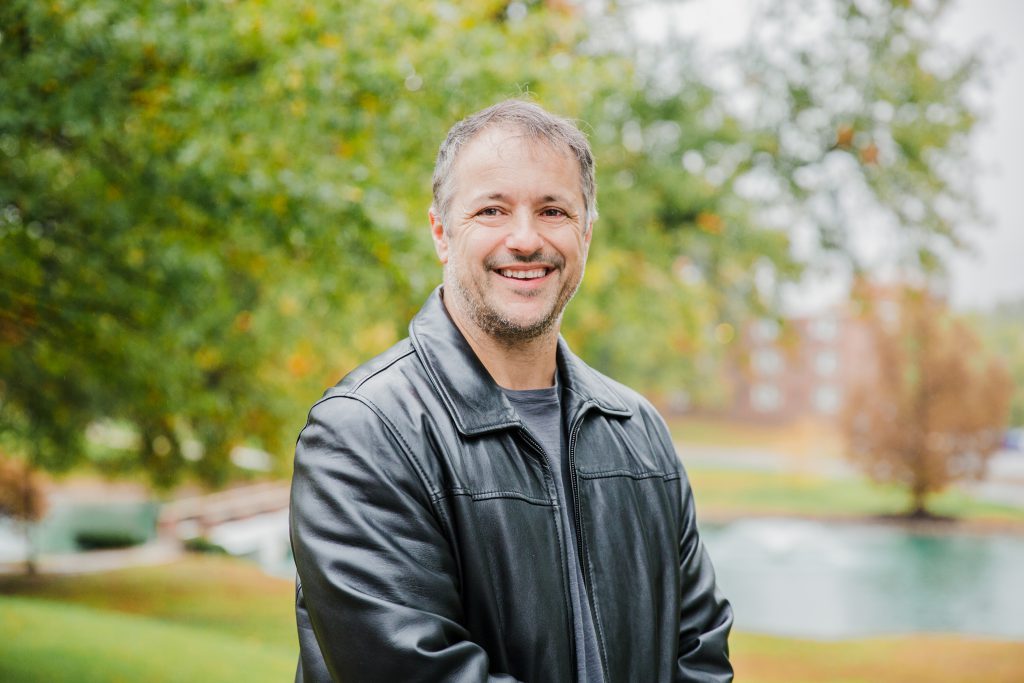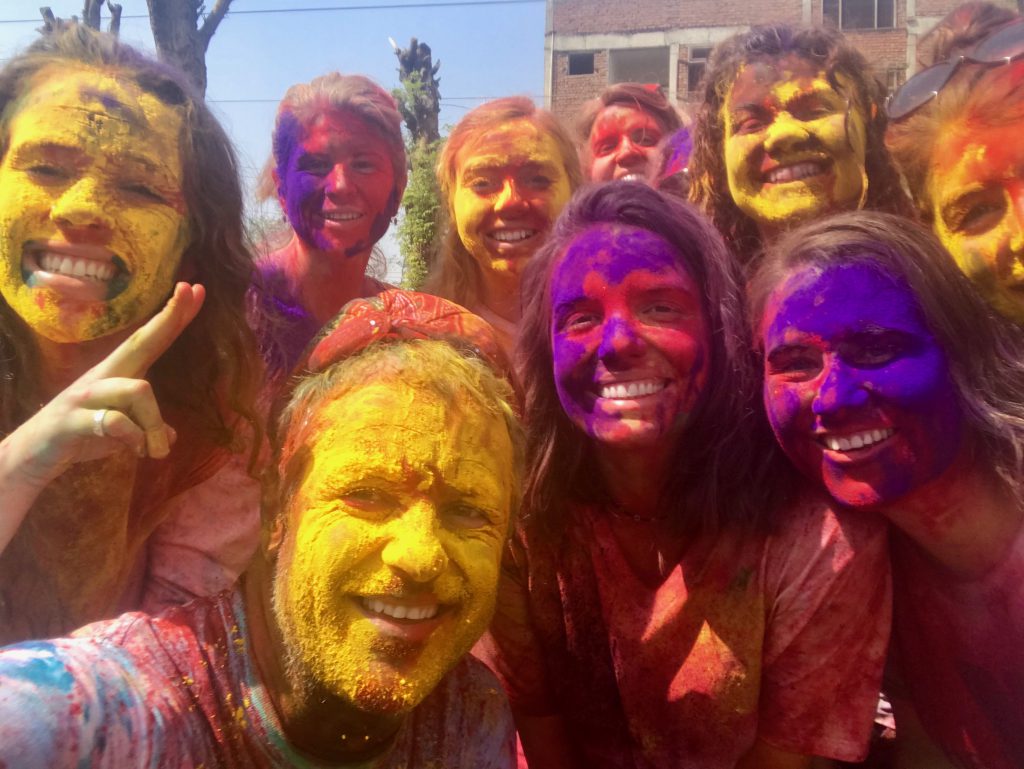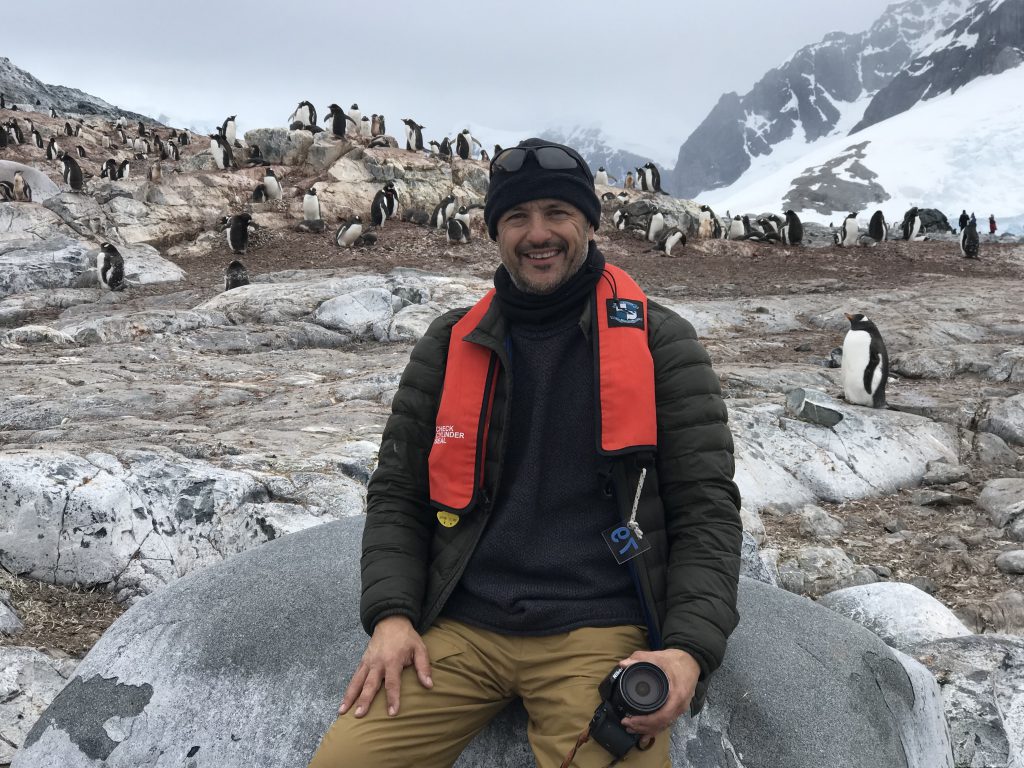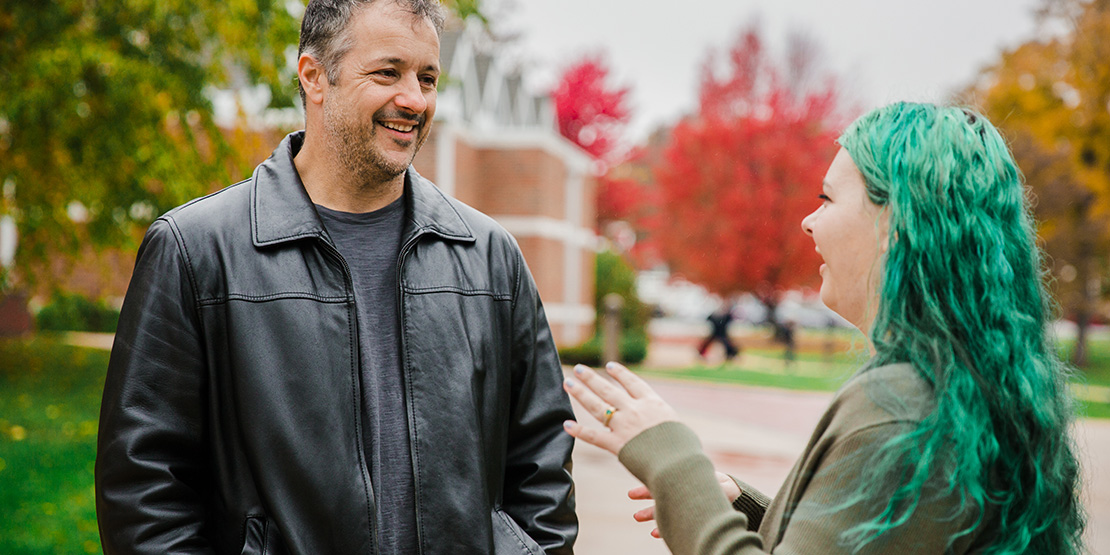Describe your background. What brought you to William Woods?
A friend of mine kept telling me you really ought to be at William Woods, I see you thriving in that kind of setting. That was back in 2003. Brad knew how much I liked working with students and wanted to see me using my interests and gifts in a context of working with students. He had built a relationship with a couple of people on our campus. My friend Brad died of lymphoma in March of 2004 and I started in August of 2004, thinking I’d be here for just one year, in tribute to him. I came to help get a campus ministry started and some faith-based programming and that’s how I got here. I had a lot of other commitments in Columbia when I started so I didn’t see myself here long term when I came. But my position evolved over time into different things I really enjoy, so here I am now, 14 years later.
What kept me here was that I love working with this age group. They are at an important time of transition in their lives. They’re thinking about a lot of crucial questions related to their future. It’s a time to grow and expand and deepen your understanding of the world. But also, I just liked this particular campus setting. This is a campus that supports being innovative and creative both in and outside of the classroom and is committed to supporting the whole person. And of course, I also value the community of people I get to work with – people who are talented, hard-working and good colleagues.

You are the Director for Center of Ethics and Global Studies, as well as University Chaplain. What do those roles entail?
The University Chaplain entails providing faith-based programming and counseling services for our students who are trying to examine questions that relate to their faith. And so the work might involve bringing in speakers on campus, hosting a film series, or just being available to students as they go through transition issues. Sometimes it’s doing weddings, sometimes it’s doing funerals, or just being part of the ceremonial life of the university as well. As the Director for Center of Ethics and Global Studies, I organize events and trips that aim at broadening the opportunities for growth with our students.
I would say one of the things that ties all of my roles together is what one novelist has written – “To me, imagination is the key to morality. If you can’t imagine yourself as someone else, to walk in their skin, you’re more likely to hurt them or demean them or legislate against them. The golden rule depends on the power of imagination.”
Much of what I do intersects in the aim of helping students become interested in a story other than their own. I assume we’re all interested in our own story, but real strides are made in growth when we become interested in someone else’s story. So when we take students to a different location, we’re putting them in a place where they can see the world from someone else’s perspective. Our global studies program entails organizing trips that are either focused on cultural immersion or service learning trips. We have done that in the last 10 years with over 20 different trips to all seven continents, and we have tried to put students in a different cultural space.
What is it like teaching religious courses on a college campus today?
I love it. I love it because one of the highlights of the World Religions course is that we bring different individuals to our classroom so that students can hear from someone else’s perspective. And so again, connecting with that idea that we are learning how to pay attention to other people’s stories and honor their life experience and learn about their values and core beliefs. We do that by bringing different speakers to campus so they hear somebody who comes to talk about their Jewish experience, someone who talks about life as an American Muslim or the value of Buddhist mindfulness practices. Or they hear from someone who describes how their Christian faith motivates their life of service. So I love that class because it is trying to get students to reflect upon their own tradition and background and the human effort to bring meaning to our lives. But it also opens them up to see how rich this tapestry is with other people’s stories and practices. So we always have a lot of really good discussion and the students get to hear from some fascinating people. We find that a lot of people end up in a place different from where they started and we listen in as they share with us these stories of personal pilgrimage. And we can adopt a wise posture of learning from the life experience of others.

What makes Woods Around The World, which you oversee, so compelling for William Woods students?
Often times people will describe where we live in the Midwest as fly-over country. We have tried to make it “fly-out” country. I resonate with what Marilyn Robinson said when she wrote, “This is an interesting planet and it deserves all the attention we can give it.” Every year through Woods Around the World we have students that have never seen the ocean, never been out of the country, and never been on a plane who then have an opportunity to see the world. So lately I’ve been thinking of it as we’re trying to offer students a world-class education by offering them the world and being serious and intentional about that. To get them to places where they’ve always wanted to go.
The other important part to this is that, in order to increase the number of American students who have a passport and use it and go abroad, you have to help find ways to reduce the cost of international travel. We’ve been able to do that in a pretty significant way here at William Woods with Project 123, which is a donor-funded program that allows us to bring the cost down for students to go abroad. And it is a win-win-win for everybody because the donors who invest in the program get to invest directly in the educational experience of our students; the local organizations get the benefit of now thousands of hours of community service, as each student does 123 hours of community service in exchange for a travel stipend to reduce the cost of the trip; and third, the students win because they get to volunteer and learn how community organizations work, and also get to get on a plane and see the world. Our tagline is “Serve the World. See the World.” It is a wonderful partnership that is very unique to our campus. It is made possible by generous and visionary people who believe in our university and our students. And because of their support, we’re able to remove some of the obstacles standing in the way of students who have always hoped to see this amazing planet we call home.
So it is compelling for those reasons and also because of what students get to see and do when they’re abroad. They get to meet people from around the world and learn that we are all the same, but different. They get to taste incredible cuisine and see the wonders of the world. They get to be among the first people on the planet to watch the sunrise in New Zealand. They get to visit Queen Elizabeth’s stables at Windsor Castle and climb the steps to the top of the Eiffel Tower. Maybe they see the Roman Coliseum, and hike through Machu Pichu. It gives them some incredible experiences that they will never forget.

What unique perspective do you bring to the Connections class for freshmen?
I think one unique perspective I bring comes from my experiences abroad and moving in and out of different cultures, which has made me especially attentive to transition issues. When we experience change in life – through a life experience or a move to a new location, we can experience what psychologists call threshold anxiety, when we go through the doorway from the known to the unknown. There is always a sense of apprehension as well as incredible excitement. So when students come to our campus, they are usually in that same place. They are nervous about what they don’t know and they are also very excited to begin this new chapter. And so some of my experiences both in terms of being a minister dealing with life issues and being someone who has spent a lot of time in different cultures, has allowed me a perspective from which to tell them stories that may help them navigate some of these new complexities in their lives. I also enjoy making a connection with our students and finding out what they’re interested in, what kind of music they listen to, the movies they watch, the matters that awaken their sense of passion and what they hope to get out of their life.

